Eight Scenic State Parks for RV Camping Along the Great American Rail-Trail

The new year is here, and 2020 stretches before us like open road. Where to go for spring break, summer vacation or a fall leaf-peeping excursion? Along the Great American Rail-Trail®, the possibilities for adventure seem endless. To experience a trail of such length—the Great American spans more than 3,700 miles—some may prefer to hop in an RV to cover greater distances and experience more trails within the route. Near many of these trails, travelers can often find state parks tucked along the banks of scenic rivers or lakes, providing idyllic settings for camping. Here are a few of these picturesque parks for RV camping along the Great American Rail-Trail.
Ohiopyle State Park (Pennsylvania)

Roughly midway along the famed Great Allegheny Passage (gaptrail.org), Ohiopyle State Park is perfectly situated for a multiday biking adventure on the 150-mile rail-trail. From the park, travelers can head southeast on the Hall of Fame rail-trail to Cumberland, Maryland, or northwest to Pittsburgh. Whitewater rafting and exploring on dozens of miles of hiking trails add to the fun in the park. With the Laurel Highlands backdrop and breathtaking views of waterfalls and the Youghiogheny River Gorge, it’s a hard camping area to top. In addition to electric hookups and tent sites, rustic cottages and yurts are available, too.
Alum Creek State Park (Ohio)
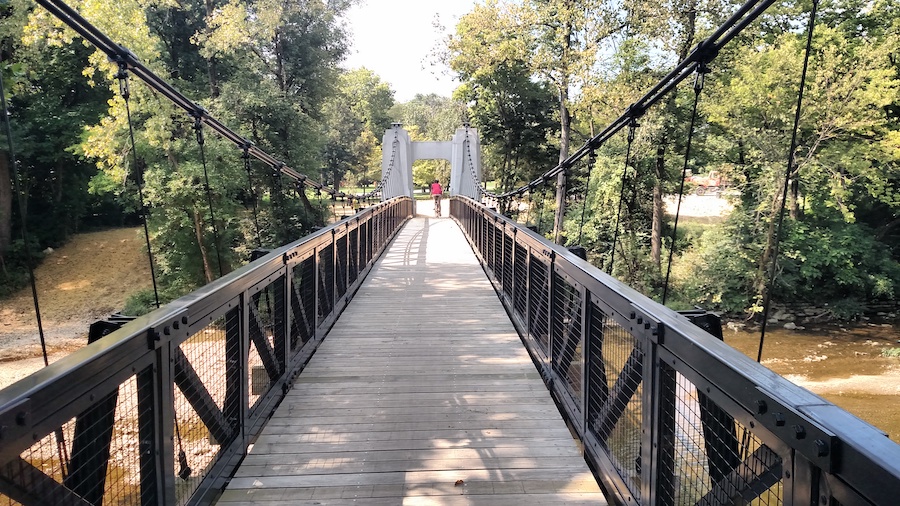
Even though Central Ohio’s Alum Creek State Park is situated on the outskirts of the state capital, it offers a remote “in-the-woods” feeling. In addition to camping, visitors can hit the lakeside beach, go boating, drop a fishing line and check out the park’s nature center. Trails for hiking, mountain biking and horseback riding abound, and just a few miles south of the park, the Alum Creek Greenway Trail begins and follows its eponymous waterway toward Columbus, winding through the city’s eastern neighborhoods. The 25-mile paved pathway is part of both the cross-state Ohio to Erie Trail and the cross-country Great American Rail-Trail.
Tippecanoe River State Park (Indiana)
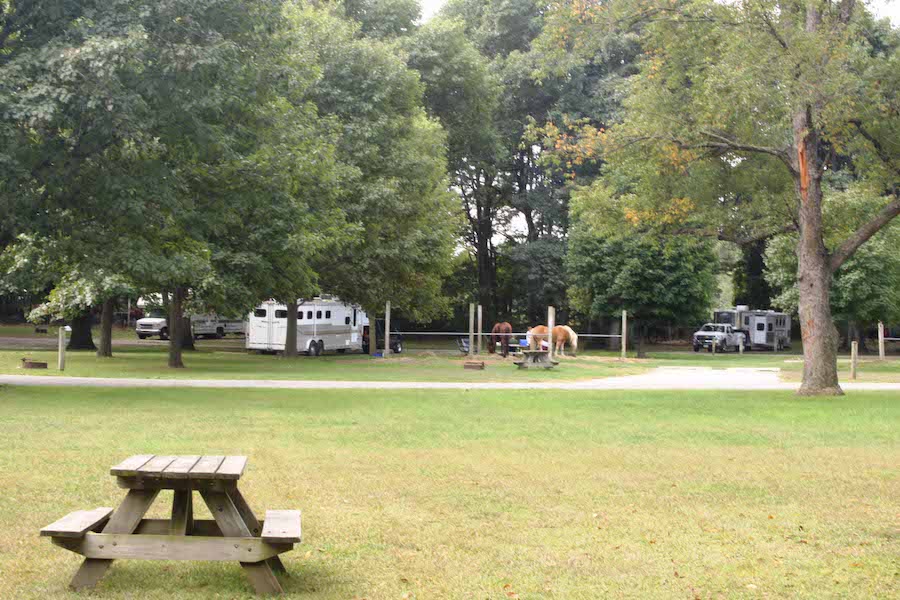
The scenic waterway winding through Tippecanoe River State Park is its major draw, and a canoe or kayak trip down the river is a highlight of a visit to this northwest Indiana park. Ventures into the park’s surrounding woodlands, sand hills and marshes can be made along footpaths and bridle trails. Just a few miles north of the park, the paved North Judson Erie Trail, a component of the Great American Rail-Trail, adds a 9-mile biking option to the mix. For those who want to camp—cabins, tent areas, electrical hookups and equestrian facilities are available.

Starved Rock State Park (Illinois)

As the Great American Rail-Trail makes its way across northern Illinois, a large swath of its route incorporates the picturesque Illinois & Michigan Canal State Trail, which traces an early 19th-century canal designed to connect the Great Lakes with the Mississippi River (via the Illinois River). The trail, threading through the country’s first National Heritage Area, is rich in historical touch points. Near the trail’s western end, Starved Rock State Park offers one of the state’s most beautiful camping spots and the perfect jumping off point for exploring the nearly 80-mile towpath or miles of hiking trails to view the park’s river overlooks, sandstone canyons and waterfalls. Other recreational options in the park include fishing, kayaking and boating (even paddlewheel boat rides).
George Wyth State Park (Iowa)
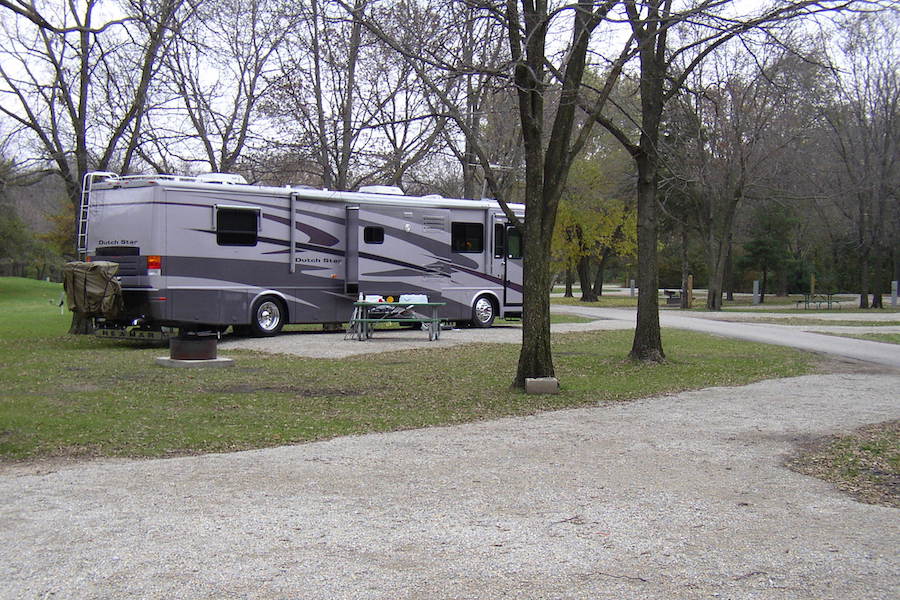
Northwest of Waterloo, George Wyth State Park is set along the Cedar River and nestled among a handful of lakes that offer fishing, swimming, boating and wind-surfing opportunities. Winding through the park, the Cedar Valley Lakes Trail provides 11 paved miles of riding through both natural and community settings. On the trail’s southern end, it connects to the Cedar Valley Nature Trail, which continues south another 50+ miles, loosely following the river through Cedar Falls and on down to Ely. Both trails are part of the Great American Rail-Trail. In addition to camping and easy access to these lushly wooded and relaxing rail-trails, the park is a National Urban Wildlife Sanctuary, providing great spots for birding and viewing wildlife.
Missouri Headwaters State Park (Montana)
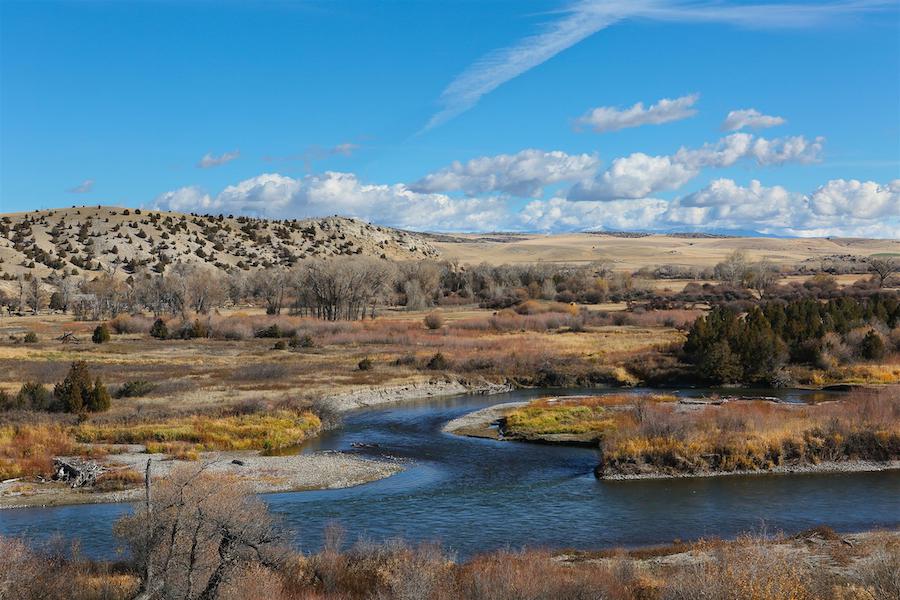
Situated in the high plains of Montana and surrounded on all sides by the Rocky Mountains, the town of Three Forks is just a few miles from the point where the Madison, Jefferson and Gallatin rivers merge and form the mighty Missouri River. On the east end of town, the Headwaters Trail System, a Gateway Trail in the Great American route, largely follows a branch of the famed Milwaukee Road rail line to Missouri Headwaters State Park, where travelers can camp in the same area where the famed Lewis and Clark expedition team once camped, too. Moose, mule deer and whitetail deer can be seen here along the park’s unpaved trails—which can be explored by foot, horseback or mountain bike—and there are also rare glimpses of bobcats and black bears. River floating and fishing are other popular activities in this pristine setting.
Heyburn State Park (Idaho)

Founded in 1908, Heyburn State Park is the oldest state park in the Pacific Northwest and features buildings constructed by the Civilian Conservation Corps in the 1930s. Water lovers will enjoy the park’s three lakes and the opportunities they afford for boating, canoeing, swimming and fishing. Outdoor pursuits within the park’s 5,800 acres also include camping, birding, wildlife viewing, and trails for hiking, biking and horseback riding through ponderosa pines and wildflower meadows. Among these, the paved 73-mile Trail of the Coeur d’Alenes is in the Rail-Trail Hall of Fame and a key piece of the Great American Rail-Trail, taking the national route across Idaho’s scenic Panhandle.
Lake Easton State Park (Washington)
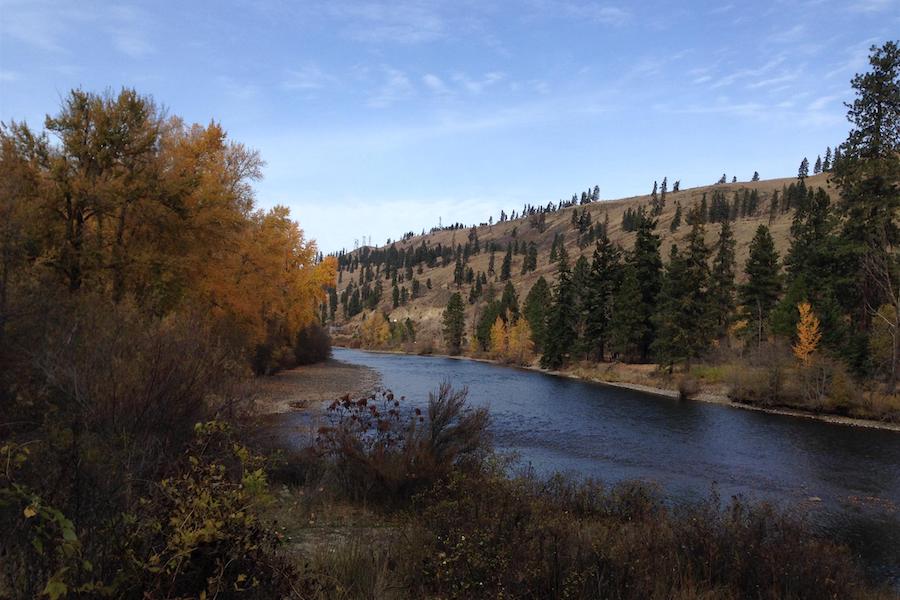
Lake Easton State Park is only about 70 miles from Seattle, but feels a world apart tucked into the forested foothills of the Cascades. The park’s well-shaded campground offers RV spaces near the lake and tent sites situated near the meeting of the lake and the Yakima River. Water enthusiasts can enjoy swimming, boating and fishing, and land lovers have several miles of hiking trails to explore. Traversing the southern section of the park, adventurers on the Palouse to Cascades State Park Trail can pedal east or west; the massive trail, totaling more than 200 miles, offers a vivid panoply of the state’s diverse landscapes and is an important component of the Great American’s journey across Washington.

Donate
Everyone deserves access to safe ways to walk, bike, and be active outdoors.
